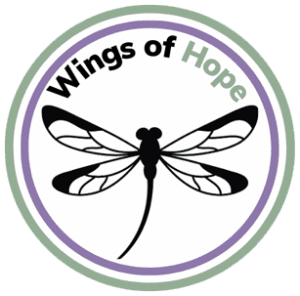It seems only fitting that my first blog post would encapsulate the neurodiversity paradigm; however, knowing where to begin with what this encompasses, is wide reaching and diverse. Being a neuro-affirming therapist I feel that language is a great starting point. We all know that language plays a vital role in so many domains but within the neurodiversity paradigm this can be even more beneficial given that it has the potential to either include or exclude based on the context and chosen vocabulary associated with it. So let’s begin with identifying the important terms that are associated with Neurodiversty and ensure that we are utilising them correctly. (This sounds easy, but it is also incredibly easy, to get wrong!)
What is Neurodiversity?
The Neurodiversity paradigm was coined by a person called Judy Singer in the 1990’s. It is an umbrella term (like biodiversity) which refers to the concept that certain neurodevelopmental conditions are normal variations of the brain. Under the umbrella, there are various neurotypes (neurodevelopmental conditions) such as Autism, ADHD, Dyslexia, Dyscalculia, Dyspraxia, Bipolar Disorder, Tourette’s Syndrome, Epilepsy, Depression, Anxiety Disorder, OCD and Synesthesia to name only a few!
Put simply, Neurodiversity is the concept that people experience and interact with the world around them in many different ways; there is no one “right” way of thinking, learning, communicating and behaving, and most importantly in my opinion, is the concept that differences are not viewed as deficits. It is like biodiversity as a range of neurotypes (types of neurology/brains), like the variety of ecosystems, are necessary for human development and survival.
When we dig a bit deeper, we will quickly stumble across the following terms and it’s important that we understand them correctly in order to ensure that we are being inclusive, after all, words are powerful tools for change! Language can provide a change of perspective, a move away from deficit-based thinking. It also has the potential to empower people to advocate for themselves and others, which can lead to acceptance!
Neurodivergent = A person who has a neurodivergence. For example, a person who lives with ADHD or Autism.
Neurotypical = A person whose brain functions, ways of processing information and behaviours are viewed as typical.
Neurodivergence = Conditions inclusive of cognitive functioning which is not considered “typical”. For example, Autism, Dyslexia, and Dyspraxia.
Neurodiverse = A community of people whose people represent the spectrum of neurodiversity. This includes both Neurotypical and Neurodivergent individuals. Individuals cannot be neurodiverse!
Neurotype = A type of brain based upon its wiring. Autism, ADHD, OCD are all neurotypes.
Neuro-differences are recognised and valued as a social category similar to differences in ethnicity, sexual orientation, gender or ability. For example a neurodivergent condition such as Dyslexia is an integral part of a person. To take away their Dyslexia is to take away from the person.
Neuro-affirming = simply means that you work with a person’s neurotype. For example, you respect that Autistic people are Autistic and you do not try to change who they are or expect them to adapt to a neurotypical environment and the expectations (social conditions) within that environment. As a neuro-affirming therapist, I will not entertain trying to mould a neurodivergent individual to maintain eye contact within conversations or force them to remain in a highly stimulating environment when this may be painful for them. Yes! I said it was painful. Noise and visual stimulation can cause pain to neurodivergent individuals!
Identity first language = Person-first language puts the person before their condition or disability – for example, ‘child with Autism’. This can insinuate that an Autistic person walks around carrying their Autism just like a handbag. Identity-first language puts a person’s condition or disability before the person – for example, ‘Autistic child’. Most neurodivergent individuals prefer to adopt identity first language. Whilst this is not the case for all, it’s easy to remedy by clarifying it with a person.
When we continue to explore aspects of language associated with the Neurodiversity paradigm we may be familiar with hearing phrases (usually from those around us!) such as:
“We all have a little bit of ADHD!”, “We’re all on the spectrum!”, “I’m OCD about cleaning!” or “She’s got a Masters so she can’t have ADHD!” … the list continues and what I want to reiterate is that by voicing these statements you are diminishing the daily lived experience that neurodivergent individuals go through. Yes, there is an element that “we all find it hard to concentrate at times” or “we all forget items that we may need!” but the difference is that when this is severely impacting your daily functioning then it is no longer categorised within the typical range of human functioning.
Next time, you feel the urge to utilise one of the above phrases, I invite you to stop and pause at how this may be received by others and I also invite you to use your understanding to advocate by drawing attention to the correct terminology. Little by little, we can make a difference on the road to acceptance.

